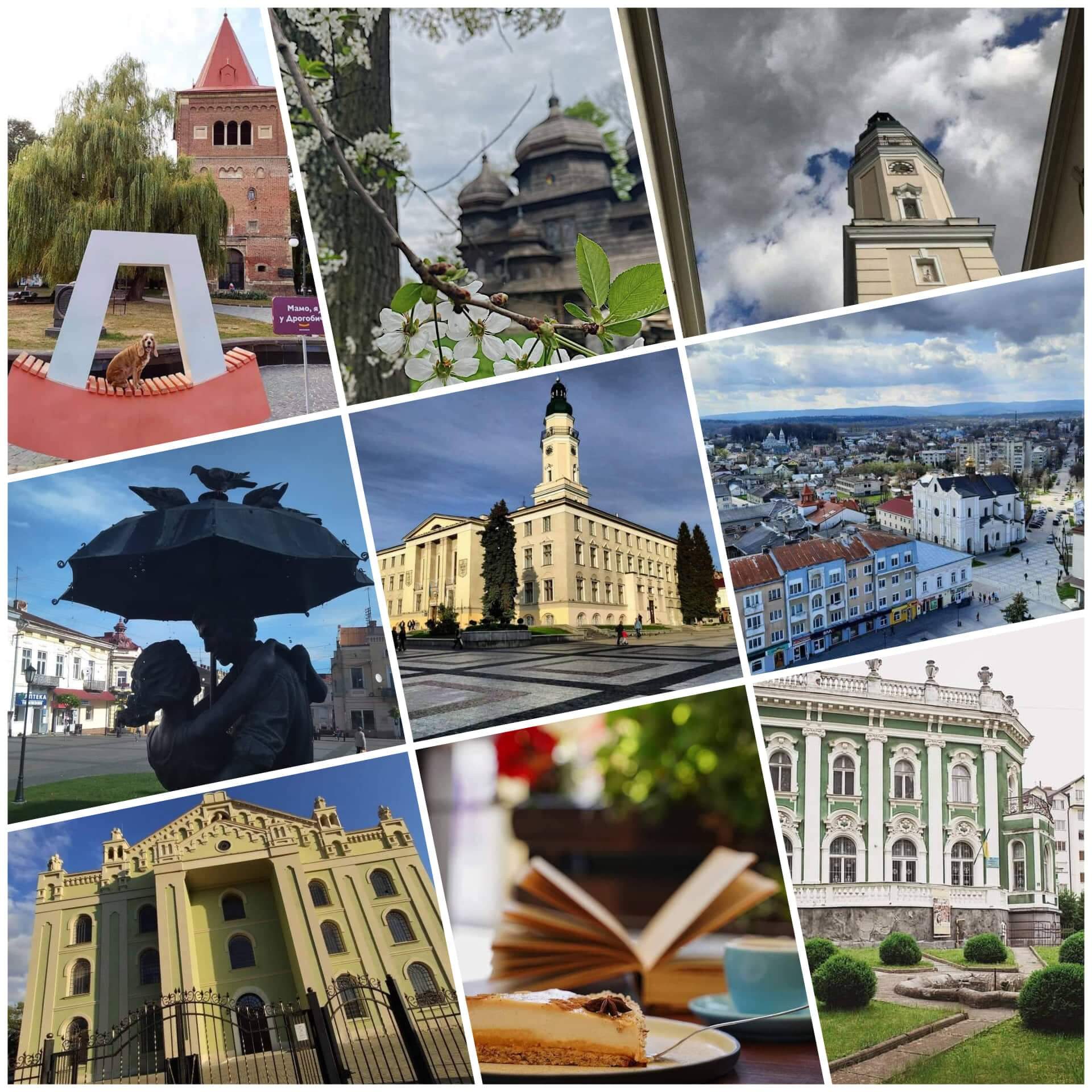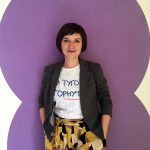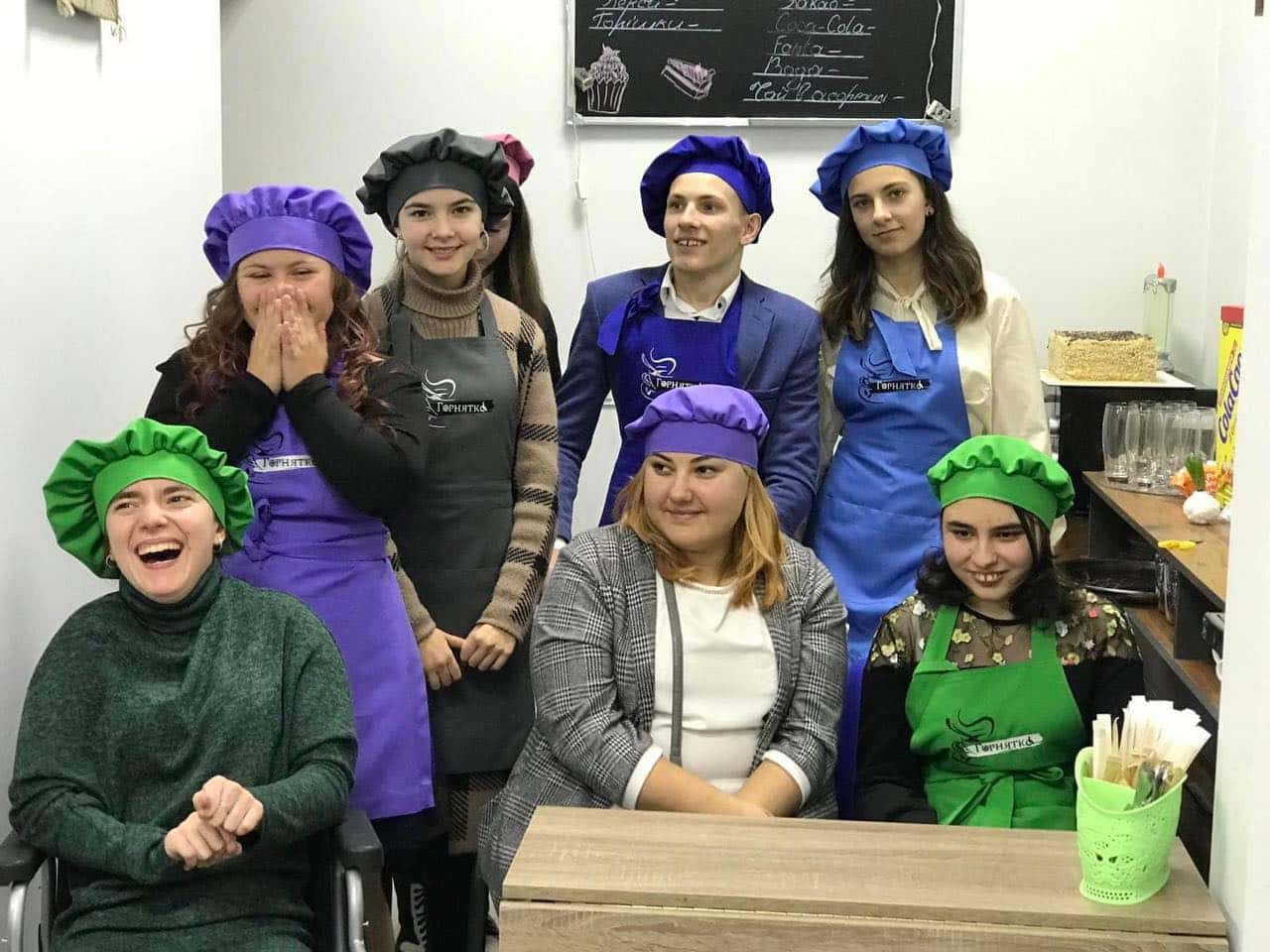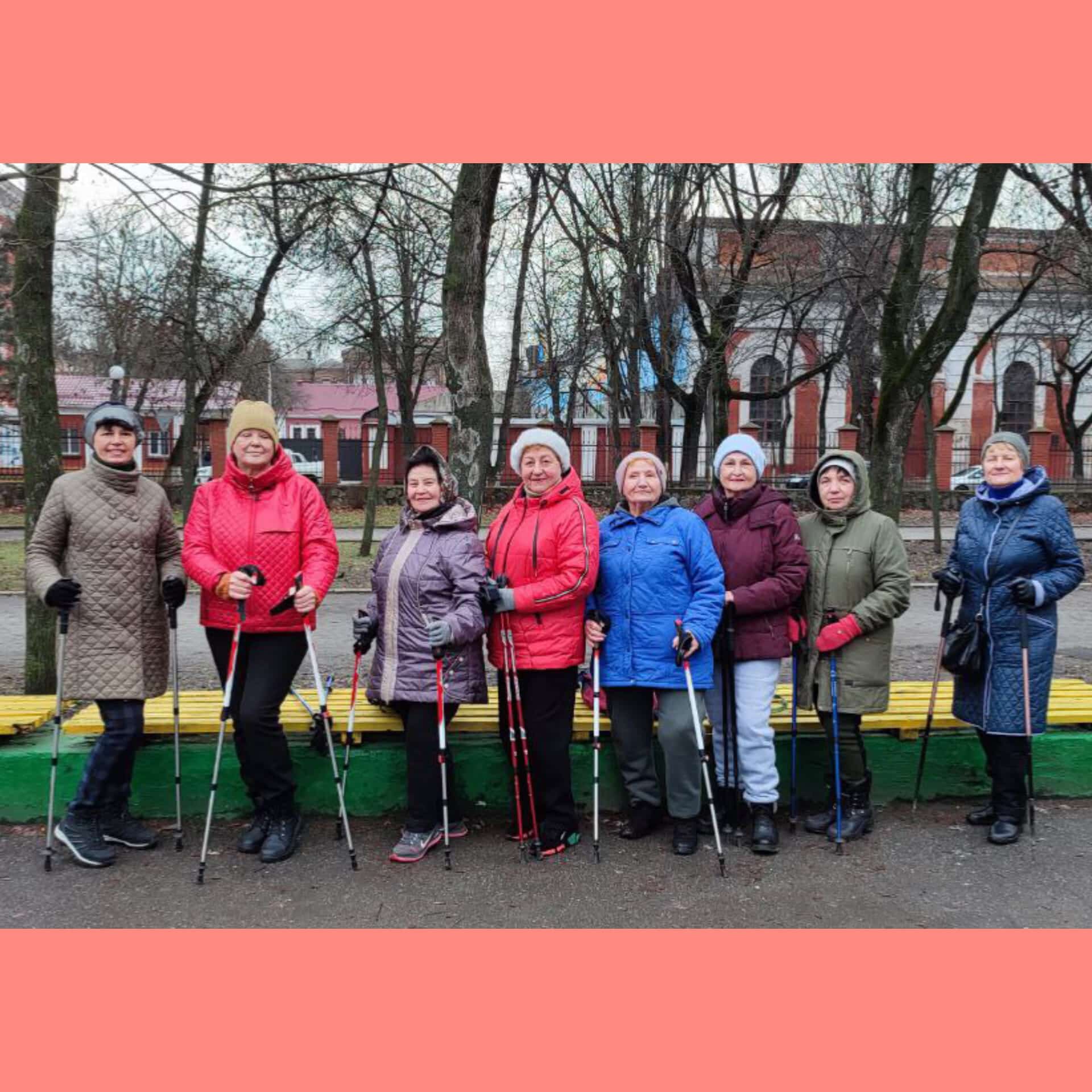Due to a large number of forced migrants Ukrainian tour guides (especially in safe cities) have been faced with much extra work. Not only do many of them hold guided tours, they also donate part of their income (or all of it) to help to defend the country while also holding charitable guided tours.
We will tell you the stories of four tour guides from Lutsk, Zhytomyr, Lviv and Kharkiv about how their work has changed against a backdrop of frequent air raid sirens, whether there are many people willing to join tours and how displaced persons are discovering Ukrainian cities.
‚Three weeks of guided tours and not one of them has been held without air raid sirens going off‘
Olha Sharuta’s degree reads ‚Teacher of the Ukrainian language‘. However, she has barely worked at school. In her last year of studying in 1998 she won a competition for a job at the state FM-radio station ‚Lutsk‘ in Ukraine, which was the only one of its kind back in those days. Since then Olha has been working as a radio host while also taking keen interest in tourism.
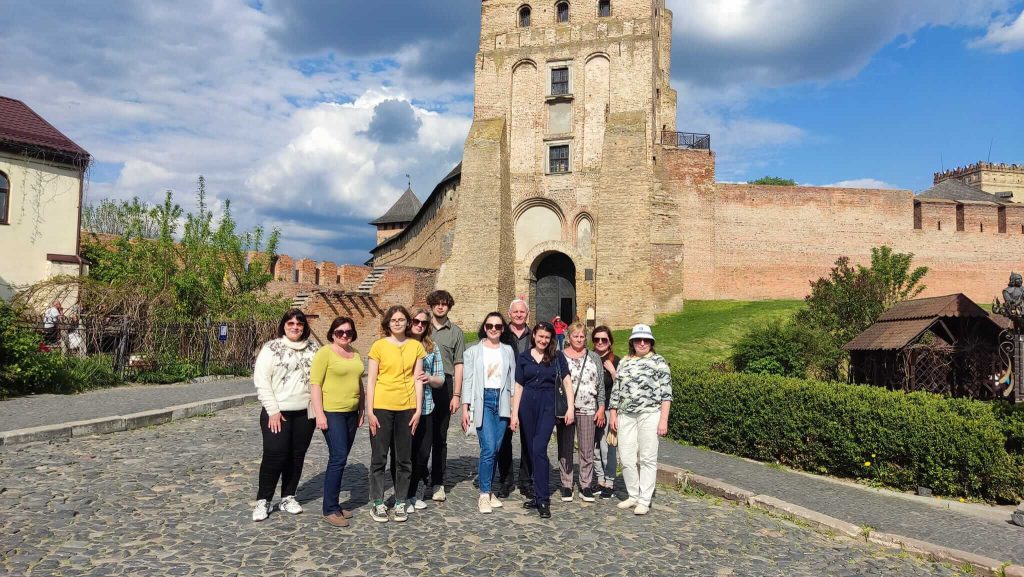
Since the year of 2000 she has also occasionally participated in the organization of various festivals. It is thanks to this experience that Olha has honed her skills of telling the story of Volyn (a province in northwestern Ukraine – translator’s note) in a way that makes people enamored with the region.
In Olha’s opinion, a guided tour is about way more than simply imparting facts.
‚A tourist usually reads information about the main features of a city they are going to visit. It is therefore our task to give them that tiny portion of love that only the person who lives there can give. War has clearly demonstrated why people are reluctant to leave their homes – they love them so much that they can’t abandon them even in the face of danger’, says Olha.
She has been active in the sphere of tourism since 2017. Since the beginning of the full-scale invasion launched by Russia, she has been working with a volunteer center ‚Suspilne Volyni’. Olha feels heartened by the fact that all people who she had held in respect before war have stayed in the city in order to organize the delivery of high-quality aid.
During the third week of the war when Lutsk was beginning to experience the influx of displaced persons, Olha was contacted by the local center of tourist information. She was offered to hold guided tours. People who have come to the region are supposed to understand its inhabitants.
‚I can’t bring myself to call them ‚displaced people’, says Olha. ‚These are people who due to certain circumstances have come here as guests. It is our task to do everything we can to make sure that they feel comfortable here and that they are not scared to come to Volyn because of fear or bias’.
According to Olha, the first thing they did before resuming guided tours was thoroughly learn the location of bomb shelters, since it is not seldom that air raid sirens wail in the city.
‚I was not sure about doing guided tours since after the war broke out I have been volunteering without having taken a single day off. To do a tour meant I had to sacrifice 2,5 hours of my time. I was persuaded by the thought that I had to learn more about people who were coming to us and understand what they needed’, says Olha.
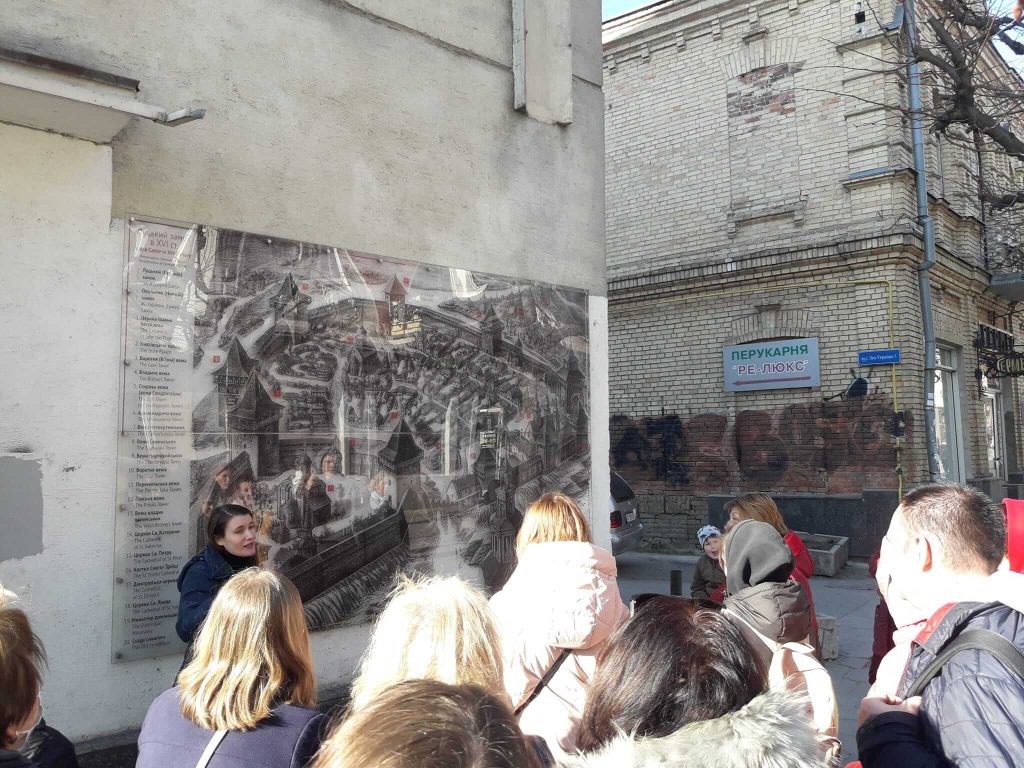
I was not prepared for two things: a large number of people and the frequency of air raid sirens.
‚My first guided tour attracted 75 people. After 15 minutes an air raid siren went off. We had to spend 90 minutes in a bomb shelter. There we were joined by another 25 people. When we were allowed to exit the shelter I understood that I did not have enough physical strength to do a tour for so many people.
The following day there were 100 people willing to take a tour, so I had to split them up into smaller groups for security reasons. I started holding a tour and after 30 minutes the first siren went off which lasted for over an hour. During the first three weeks I did tours every weekend and not one of them has been held without sirens going off’, says Olha.
In her guided tours Olha tells the stories of the 17th and 18th century, taking tourists to the Lesya Ukrainka street where the stone is placed that marks the old city limits. Back in the days people would ponder whether they would ever come back to the city again.
‚When I touched on this topic for the very first time, people started to weep. These were women that had come from Donetsk or Kharkiv. They must also have thought about whether they could ever return home. I cannot but talk about it, but how am I supposed to do it right?’, says Olha.
The same is true for objects of architectural heritage in Lutsk that have been preserved despite having been subjected to the WWII bombardments. People keep coming from the towns and cities of which nothing has been left.
‚Such psychological aspects are quite important during wartime tours. Information is the same, it’s just that the format of presenting it differs’, says Olha.
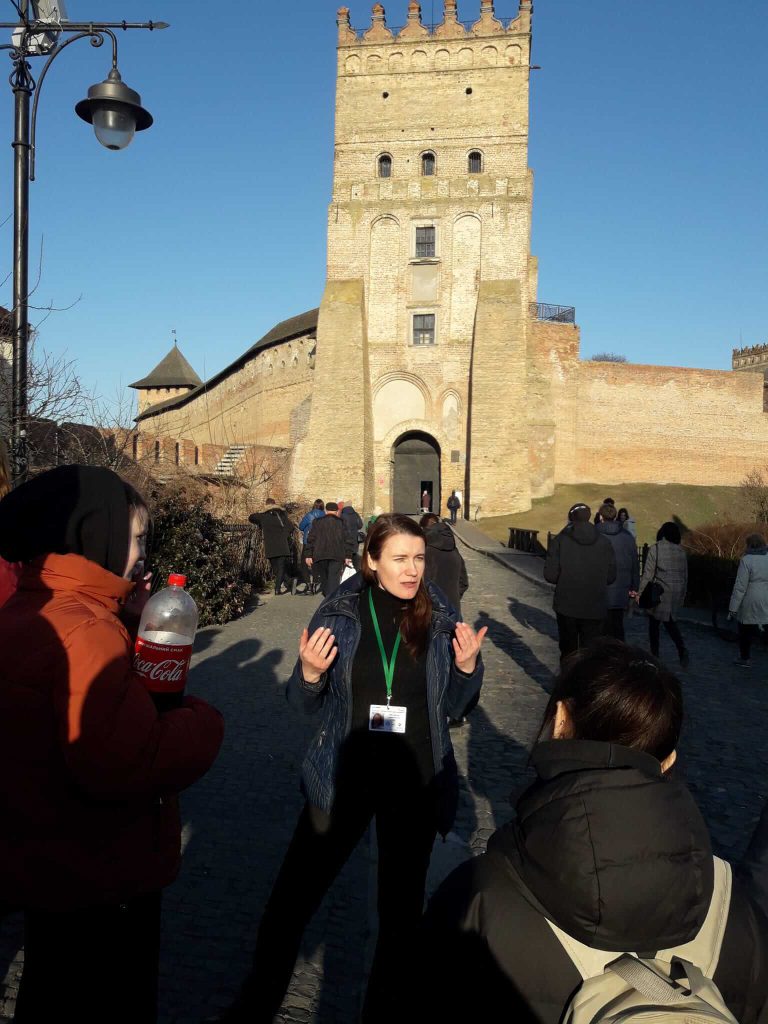
These tours also play a therapeutic role. ‚They help understand that there are many people out there who have found themselves in a similar situation. They help people get acquainted with one another, change and support one another and not succumb to depression or wrath. Our strength is in our unity. Guided tours provide a perfect opportunity to realize it’, says Olha.
Further information on guided tours in Lutsk you will find on https://www.visitlutsk.com
‚I love you, Zhytomyr‘ – how local tour guides introduce the city to us
Serhiy Dekhtyarenko has been active for over 10 years in the tourist sector. He has been working as a tour guide since 2016. Serhiy is the head of the only tourist agency in town called ‘Patriot’ which popularizes Zhytomyr.
He holds theme-based and whirlwind guided tours in the city and the region, in particular, he takes tourists to exciting places of interest (Kaminne Village, Hulska Mina, the Barefoot Carmelites Monastery at Berdychiv). One of the tourist attractions in Zhytomyr is the Museum of Cosmonautics.

‚Before the new stage of the war I had been taking tourists to all parts of Ukraine. I had worked out new routes such as ‚the sunny Kherson region’. I had worked in the Carpathian Mountains and in the Zakarpattia region. I had taken tourists to castles situated in Lviv, I had taken them to Chornobyl, says Serhiy.
With the beginning of the big war Serhiy and his colleagues suspended work for a month. Afterwards a friend of his, head of the museum ‚Yard of a Craftsman‘ offered him to do free guided tours in order to support people and to help them unwind.
‚The difficulty was that my managers were no longer with me. Some of them had left the country with others having moved to other cities of Ukraine. Another colleague was from Zhytomyr, but the region’s northern parts were being shelled at that time and guided tours was the last thing she was thinking about. It was only me who could do that’, says Serhiy.
That’s how he came up with an idea of launching a charitable project ‚I love you, Zhytomyr’ with a view to holding guided tours and other cultural events. One of the first such events was a meeting with the renowned theater actor and director Petro Avramenko. Today he stages his plays not only in Zhytomyr but also across the whole region.
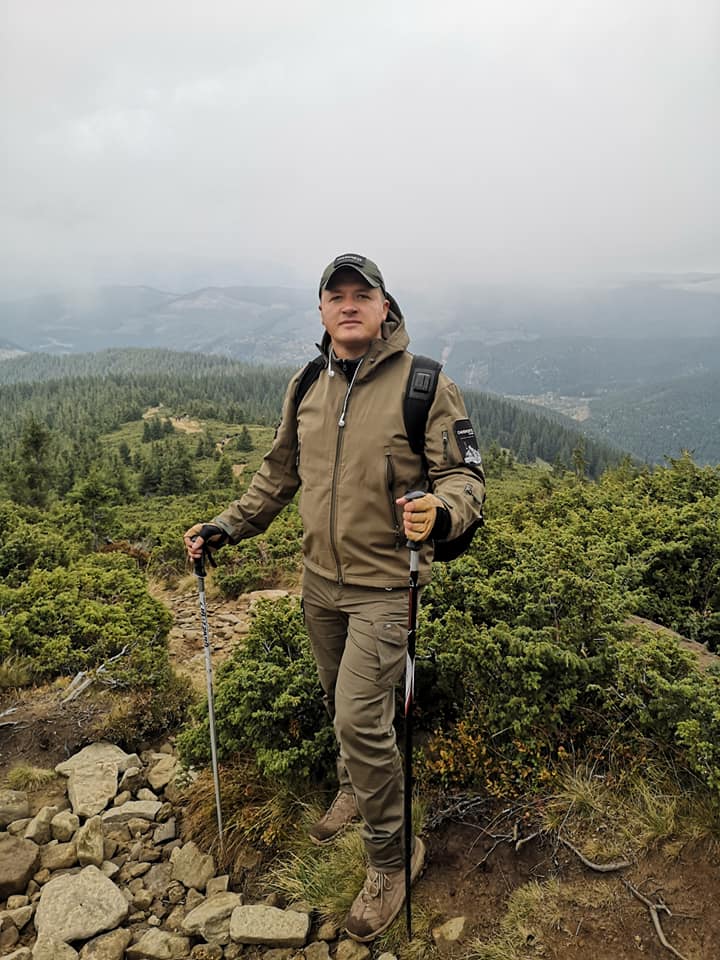
To organize his work Serhiy has created a Telegram channel called ‘Zhytomyr’s cultural life‘ (as of now it has 300 subscribers) and he has been sharing relevant information on his Facebook page, having invited all those interested in it to join free guided tours as well as to come to recitals and small concerts.
‚At first we were concerned about how people would react to this initiative. It then turned out that they had been missing such events. We form small groups consisting of 20 people. If a guided tour is held outside, we check where bomb shelters are in advance. The only museum working in the city is ‚Yard of a Craftsman’ and it also has a bomb shelter‘, says Serhiy.
Guided tours are held in the city and they are free. One doesn’t need to use public transport in order to join a tour. Serhiy has decided to modify the events that he used to hold before, having split them up into those held at theme-based locations with a time-bound program of one hour.
‚I constantly choose different locations. First guided tours featured 20 people since there were limitations on the number of participants. Moreover, forests are now out of bounds so there are a lot of people willing to take a stroll at least through the city. The number of participants in my subsequent guided tours has easily grown to 40 people’, says Serhiy.
During one of his tours Serhiy met two families that came from Kharkiv. On the bank of the river Teteriv (where they were vacationing) the family shared with Serhiy their story about how they survived shelling and how they were leaving town while relocating their business equipment.
Serhiy emphasizes that his guided tours are free of charge.
‚It’s one thing to charge money when citizens of Zhytomyr are willing to pay. However, I refused to charge fees to displaced persons. In return these families from Kharkiv have become my regular visitors‘, says Serhiy.
He adds that there already are many people willing to take tours through the region, which is why guided tours there are gradually being resumed. More relevant information can be found on Serhiy’s Facebook page.
‚Tours outside the city are mostly embarked on by citizens of Lviv‘
Natalya Zubyk has been exercising her profession as a tour guide since 2009. She has a degree in IT but her maternity leave made changes to her area of interest. The desire to tell her kids about the city in which they live has led Natalya to take a tour guide course ‚Traveling Plus‘. After 4 years of involvement in this course she has already started to teach it herself.
‚Upon the completion of the course its participants possess the knowledge needed to hold 4 guided tours. I decided to go beyond it. That is how the first walking tour through the Lviv of the Habsburg empire came into being. It covers a vast territory taking up about 80% of the historical city center. Apart from that I felt that the niche of patriotic-themed tours was not filled. Also in 2010 I organized a tour called ‚Lviv – the city of heroes’ in which I tell the story of the city from the Middle Ages to the times of Stepan Bandera (Ukrainian nationalist leader, politician and theorist of the militant wing – translator’s note)‘, says Natalya.
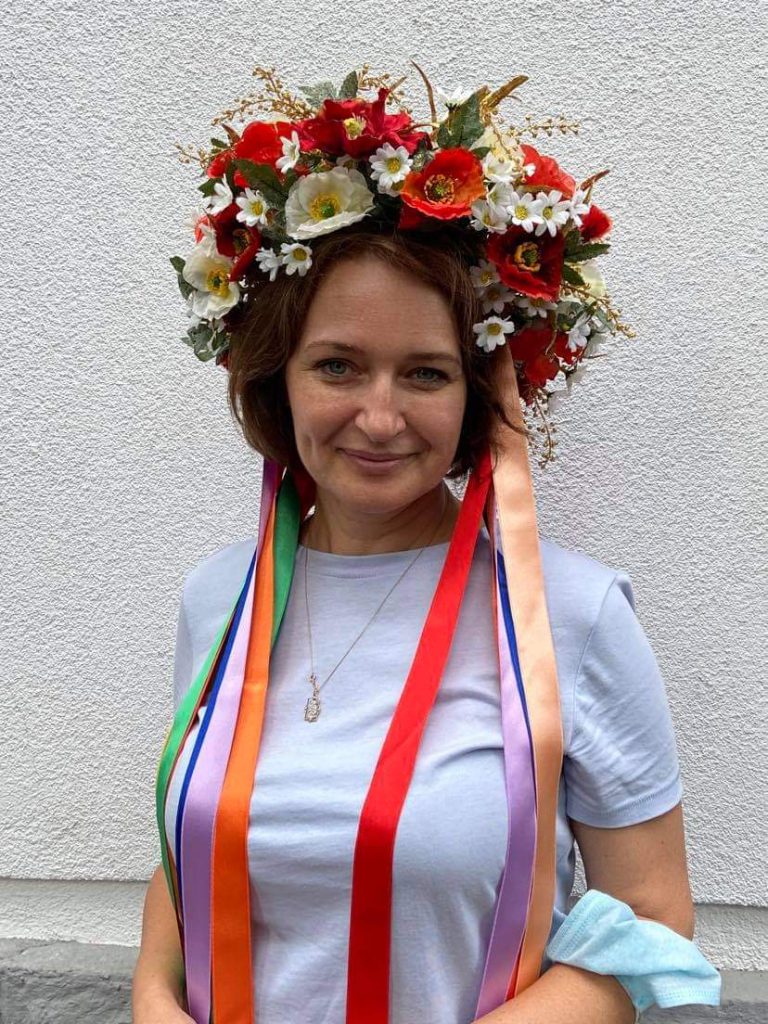
After the first three weeks of the all-out invasion, a friend (who is also a blogger) of Natalya’s gave her a call and encouraged her to resume work.
‚I suggested dedicating my first guided tours to the topic of heroes. During the first two weeks I held three such tours participated by 20 people. I was delighted at the result since these tours were gaining in popularity‘, says Natalya.
During one of such patriotic-themed walks she was forced to change their format due to the air raid sirens.
‚It was the first day that Lviv was hit by missiles. We were hiding in a bomb shelter located at the nearest church, so instead of a tour I delivered a 3-hour lecture. Everyone who found themselves together with us in the shelter was listening to it‘, says Natalya.
Eventually Natalya divided the tour up into two 90-minute parts, since such a format would be safer. She now does tours called ‚Military Lviv’ as well as leads a theme-based walk dedicated to how the city has been responding to the COVID-19 pandemic. A cycle of short 60-90-minute tours ‚Sacred Lviv’ has thus been launched.

Recently Natalya has started offering excursions into the countryside or to small townships. They are mostly joined by citizens of Lviv. Unfortunately, such a format is not free. Natalya admits that whereas she might do it free of charge, transportation does require additional financial resources. Given that usually the tour’s destinations are located nearby, the costs of such trips are by no means critical.
Free excursions for displaced persons are also offered by the Lviv ‚Heritage Bureau’. 200 people joined them during the first two days.
‚The idea is good but no tour guide is capable of coping with so many people. Therefore, tour guides and the city (‚Heritage Bureau‘, tourism department of the Lviv City Council) have come up with the format ‚Walking around Lviv‘. We first published information about the first planned tours 2 weeks in advance. We now do that one month beforehand’.
There are a lot of people interested in tours. Such a format has proven quite popular.
Natalya Zubyk takes an active part in charitable initiatives by helping her friends and acquaintances fighting on the front lines. She has also participated in the sixth charitable auction ‚Buy a meeting to help Ukraine’ whose goal was to raise 500 thousand UAH (approximately 17 thousand USD – translator’s note). 525 thousand UAH were raised after two weeks.
Further information on guided tours may be found on the webpages: Heritage Bureau in Lviv, Lviv Tourism Office, Lviv.Travel, CircleofLviv
‚I can spend hours on end recounting stories about people who have defended Kharkiv’
Serhiy Kozub has obtained a degree in history at the Kazarin University in Kharkiv. While still being a student he started working in the advertising sector, having launched his own agency that has been active for nearly 30 years. He used to spend his week working at his agency while dedicating the weekends to doing guided tours.
In 2015 Serhiy met a local historian and journalist, Valeriya Kulshytska. They then hit upon the idea of working together by setting up a local history project called ‚Excursions for Our People‘.
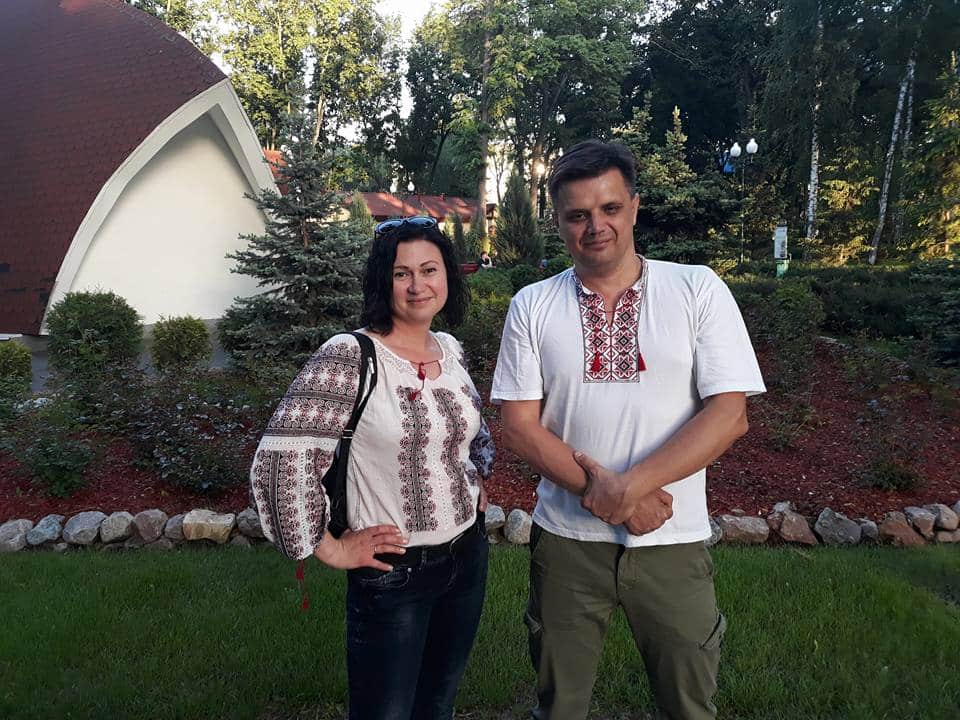
‚Valeriya is in charge of the whole local history component of the project (notable architects, buildings, churches, interesting stories) whereas I am responsible for telling the stories about personalities, dates and events. We offer both walk tours and outside excursions into the region and to the cities of Dnipro, Zaporizhzhia and Sumy’.
Nothing has changed for Serhiy since the beginning of the full-scale invasion. He has been helping the Ukrainian military since 2014. He has not stopped doing that.
Public transport suspended its services in Kharkiv, which meant that tours could not be held. During quarantine Serhiy and Valeriya started shooting videos featuring the history of the city’s buildings, its culture and famous people who lived there. So now they have decided to carry on with these activities.
In the first days of the war they set out to support visitors of the website of the project ‚Excursions for Our People’ to the best of their ability.
‚My two businesses are currently not operating. Most of my money has been donated to the Armed Forces of Ukraine. When I ran out of it, I suggested that Valeriya work out a new route ‚Kharkiv – a hero city of WWIII’. I can spend hours on end recounting stories about people who have defended Kharkiv. As a historian I can also provide an up-to-the-minute account of the events that have taken place in the city while Valeriya will be talking about the buildings destroyed by Russian occupants’, says Serhiy.
Over 100 people (among them also foreigners) have expressed their desire to join the very first round of the guided tour ‚Kharkiv – a hero city of WWIII’.
They will be split up into several groups and the tour will be held in several consecutive rounds.
‚In order to participate in the project people are offered to purchase certificates. The format of the tour is aimed not only at raising funds for the needs of the army, but also at offering our intellectual work in return’.
The organizers of the tour will definitely invite those who have liberated Kharkiv from Russian occupants.

